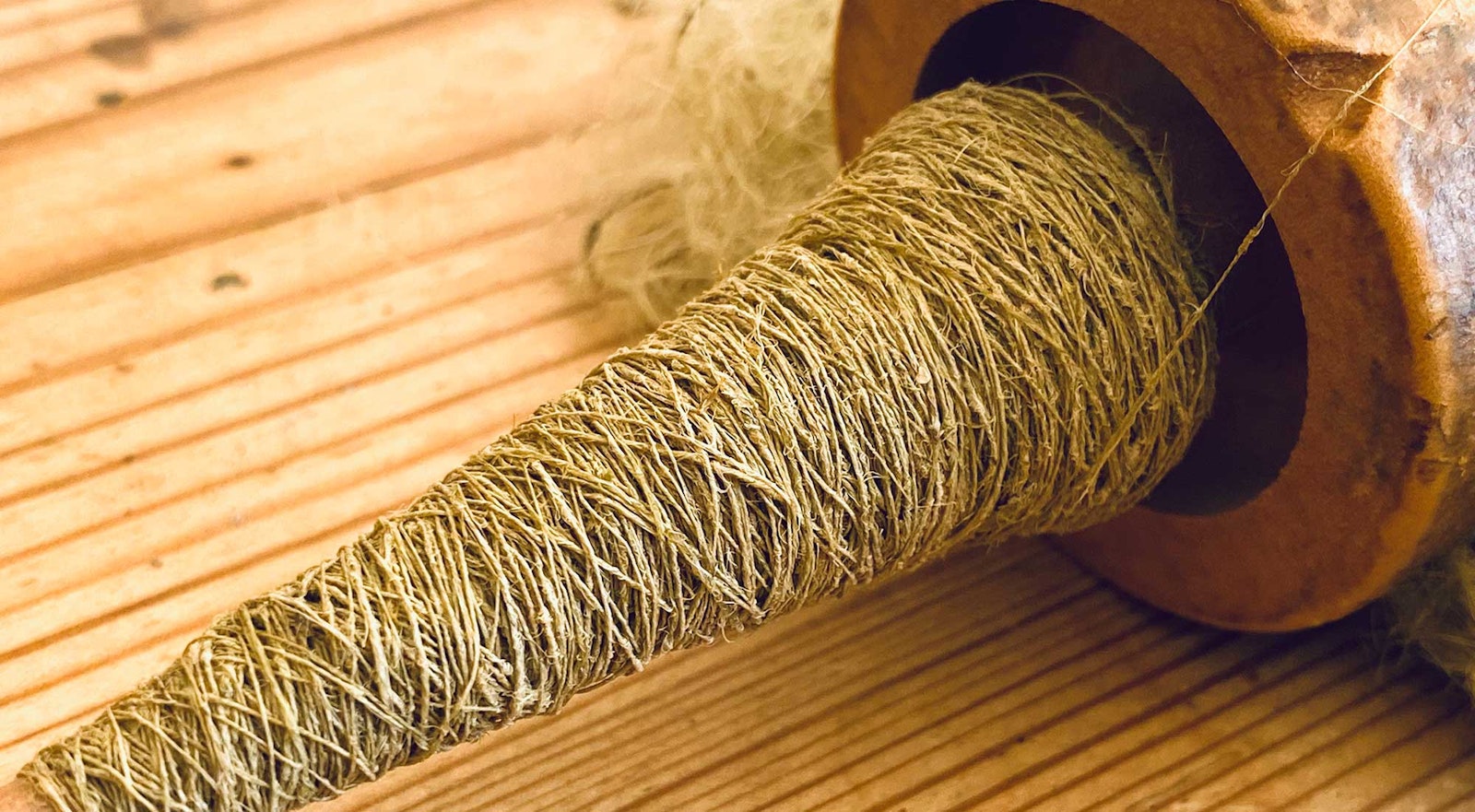Once upon a time (as all good stories begin), I was walking along the headlands at Land’s End in southern England. The hedgerows were rich with hawthorn, blackthorn, hazel, holly, and a lanky, leafy, weedy-looking plant that looked, I thought, just like stinging nettle. Just like in my backyard at home! I heedlessly grabbed a handful, and sure enough—stinging nettle. The more I walked along, nursing my poor hand, the more nettle I saw in the understory. It had sprung up everywhere in the fertile, moist soil.
It’s a wonderful weed, really, rich in nutrients, effective for a wide range of maladies, delicious in soups, stews, salads, wherever you might use spinach, once you soak off or strip off the vicious little spines that inject you with histamines, formic acid, and other irritants.
But best of all, most magical of all, is the silky, spinnable fiber hidden in its long, rank stems. Humans have been retting out these fibers and fashioning them into cloth for at least three thousand years. It’s the stuff of fairy tales (remember the story of the 11 brothers in Hans Christian Andersen’s “The Wild Swans”?) but also the stuff of peasants’ work clothes. For millennia in some communities, humans gathered, soaked, retted, hackled, combed, spun, and wove this ubiquitous weed into the fabric of their everyday lives—at least, until cotton came along. The spinning was especially time intensive. Imagine producing four or five thousand yards of nettle yarn on a drop spindle for a single shirt.
The Healing Power of Slow Craft
There’s more magic than just the fiber, though. Nowadays, making our own nettle cloth isn’t a life necessity. In practice, it can be a meditation on nature’s bounty, on human ingenuity, on spiritual values. It can be a reflection on the hidden beauty to be found beneath thorns.
 Allan Brown collecting nettles in England. Photo by Dylan Howitt
Allan Brown collecting nettles in England. Photo by Dylan Howitt
No one knows this better than Allan Brown of Brighton, England, who spent seven years immersed in the creation of a nettle dress. He says, “Making clothing this way is slow and gentle. It means returning to the same places and doing the same things over and over. The repetitiveness of so many of the tasks that go into creating cloth feels like a deepening rather than drudgery. It’s as if the cloth is ensouled by intention. Clothing that is being made this way, specifically for you, by people that know and love you, from fibers that are to be found in your own landscape, is the way clothing has been made for most of our history. We were collectively wearing the dreams, stories, joys, and suffering of the people that made up our community.”
 Allan’s daughter Oonagh wearing the finished nettle dress. Photo by Dylan Howitt
Allan’s daughter Oonagh wearing the finished nettle dress. Photo by Dylan Howitt
Allan’s journey into “hedgerow couture” has been documented in an enchanting film by his colleague Dylan Howitt. Allan spun and wove his way through years of “tragedy, magic, and love” as his wife died, his daughters grew up, and he evolved a simpler, more sustainable life. The film, simply titled The Nettle Dress, will feed your soul.

Where to Watch
The film will be available to view online for a two-week period starting November 15, 2024. Visit The Nettle Dress Film + Pre-Recorded Q&A with Allan Brown and Dylan Howitt.
In addition, visit nettledress.org or Instagram @nettledressfilm for up-to-date information on screenings in the United States and abroad.
Further Reading
The Nettle Dress. nettledress.org.
Nettles for Textiles. nettlesfortextiles.org.uk.
The Long Thread Podcast: Allan Brown, The Nettle Dress
This article was first published in Spin Off Spring 2024.
Linda Ligon is a cofounder of Long Thread Media.

